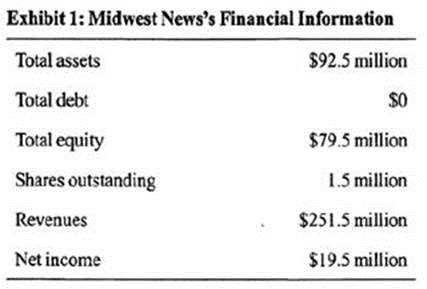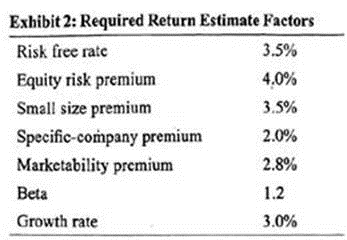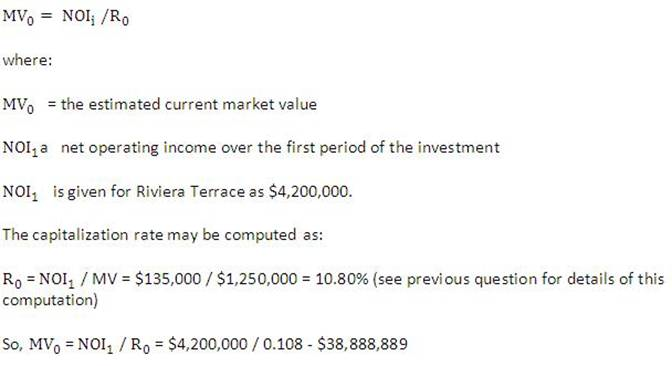CFA Institute CFA-Level-II Exam Questions
- Topic 1: Equity Valuation
- Topic 2: Financial Reporting and Analysis
- Topic 3: Ethical and Professional Standards .
Free CFA Institute CFA-Level-II Exam Actual Questions
Note: Premium Questions for CFA-Level-II were last updated On Nov. 09, 2025 (see below)
Rock Torrey, an analyst for International Retailers Incorporated (IRI), has been asked to evaluate the firm's swap transactions in general, as well as a 2-year fixed for fixed currency swap involving the U .S . dollar and the Mexican peso in particular. The dollar is Torrey's domestic currency, and the exchange rate as of June 1,2009, was $0.0893 per peso. The swap calls for annual payments and exchange of notional principal at the beginning and end of the swap term and has a notional principal of $100 million. The counterparty to the swap is GHS Bank, a large full-service bank in Mexico.
The current term structure of interest rates for both countries is given in the following table:

Torrey believes the swap will help his firm effectively mitigate its foreign currency exposure in Mexico, which sterns mainly from shopping centers in high-end resorts located along the eastern coastline. Having made this conclusion, Torrey begins writing his report for the management of IRI. In addition to the terms of the swap, Torrey includes the following information in the report:
* Implicit in the currency swap under consideration is a swap spread of 75 basis points over 2-year U .S . Treasury securities. This represents a 10 basis point narrowing of the spread as compared to this time last year. Thus, we can assume that the credit risk of the global credit market has decreased. Unfortunately, the decline provides no insight into the credit risk of the individual currency swap with GHS Bank, which could have increased.
* In order to decrease the counterparty default risk on the currency swap, we will need to utilize credit derivatives between the beginning and midpoint of the swap's life when this particular risk is at its highest. This is a significantly different strategy than we normally use with interest rate swaps. For interest rate swaps, counterparty default risk peaks at the middle of the swap's life, at which point we utilize credit derivative CQuntermeasures to offset the risk.
* Because currency swaps almost always include netting agreements and interest rate swaps can be structured to include mark-to-market agreements, we can significantly reduce the credit risk of these swap instruments by negotiating swap contracts that include these respective features. When negotiating these features is not possible, credit risk can be reduced by using off-market swaps that do not require an initial payment from IRI.
Six months have passed (180 days) since Torrey issued his report to IRI's management team, and the current exchange rate is now $0,085 per peso. The new term structure of interest rates is as follows:

Calculate the value of the 2-year currency swap from the perspective of the counterparty paying dollars six months after Torrey's initial analysis.
Use the new Mexican term structure to derive the present value factors:
Zl80 (360) - 1 / [1 4 0.050(180 / 360)] = 0.9756
Z180 (720) = 1 / [1 t 0.052(540 / 360)] = 0.9276
The present value of the fixed payments plus the principal is:
0.0507 x (0.9756 + 0.9276) + 0.9276 = 1.0241 per peso
Apply this to notional principal and convert at current exchange rate:
1.0241 x ($100M / 0.0893) m 0.085= $97.48 million
The value of the swap is the difference between this value and the pay dollar fixed present value derived in the previous question:
$97
.48 - $101.69M = - $4.21 million (Study Session 17, LOS 61 A)
Sentinel News is a publisher of over 100 newspapers around the country, with the exception of the Midwestern states. The company's CFO, Harry Miller, has been reviewing a number of potential candidates (both public and private companies) that would provide Sentinel News entrance into the Midwestern market. Recently, the founder of Midwest News, a private newspaper company, passed away. The founder's family members are inclined to sell their 80% controlling interest. The family members are concerned that Midwest News's declining newspaper circulation is not cyclical, but rather permanent. The family members would reinvest the cash proceeds from the sale of Midwest News into a diversified portfolio of stocks and bonds. Miller's staff collects the financial information shown in Exhibit 1.

Miller noted that Midwest News does not pay a dividend, nor does the company have any debt. The most comparable publicly traded stock is Freedom Corporation. Freedom, however, has significant radio and television operations. Freedom's estimated beta is 0.90, and 40% of the company's capital structure is debt. Freedom is expected to maintain a payout ratio of 40%. Analysts are forecasting the company will earn S3.00 per share next year and grow their earnings by 6% per year. Freedom has a current market capitalization of S15 billion and 375 million shares outstanding. Freedom's current market value equals its intrinsic value.
Miller's staff uses current expectations to develop the appropriate equity risk premium for Midwest News. The staff uses the Gordon growth model (GGM) to estimate Midwest's equity risk premium. The equity risk premium calculated by the staff is provided in Exhibit 2.
Miller believes the best method to estimate the required return on equity Midwest News is the build-up method. All relevant information to determine Midwest News's required relurn on equity is presented in Exhibit 2.

The specific-company premium reflects concerns about future industry performance and business risk in Midwest News. Miller makes two statements concerning the valuation methodology used to value Midwest News's equity.
Statement I: The required return estimate that is calculated from Exhibit 2 reflects all adjustments needed to make an accurate valuation of Midwest News.
Statement 2: It is better to use the free cash flow model to value Midwest News than a dividend discount model.
Miller considered two different valuation models to determine the price of Midwest News's equity: a single-stage free cash flow model and a single-stage residual income model.
Based on Exhibit 2 and using the build-up method, Midwest News's required return on equity is closest to:
= risk-free rate + equity risk premium + size premiu + specific-company premiu

Control premium and marketability premium adjustments are not usually made in the required return on equity calculation, but rather directly to the estimated value. (Study Session 10, LOS 35.d)
Russell Larson, CFA, is an investment analyst for Sentry Properties, Inc., a group of wealthy investors that is currently interested in purchasing Riviera Terrace, a 60- unit apartment complex in Southeastern Florida. The current owners of Riviera Terrace have agreed to sell the property for $40,000,000. Larson estimates that Rivjera Terrace's net operating income for the first year after the sale is finalized will be $4,200,000, and it is expected to maintain its historic annual growth rate of 5%.
At Sentry's request, Larson will evaluate the investment in Riviera Terrace over a 5-year horizon using selling prices of $45,000,000 and S60,000,000.
During the due diligence process, Larson has determined that the average selling price for apartment complexes similar to Riviera Terrace is $1,250,000 per unit, with annual net operating income equal to $ 135,000 per unit. Larson has also determined that net operating income is typically 80% of gross income.
Larson has collected the following information to aid in his evaluation of Riviera Terrace.
* The property will be fully depreciated at a rate of S 1,250,000 per year over 32 years.
* Rental contracts are expected to be reissued on the date the sale is completed.
* Sentry has arranged to finance the investment with a 30-ycar, 7% interest-only loan, with monthly payments and a face value equal to 80% of the initial investment.
* Selling expenses will be 7% of the gross selling price.
* The capital gains tax rate is 15%, the tax on recaptured depreciation is 28%, and the tax rate on ordinary income is 40%.
* Sentry Properties' required return on equity is 20%.
* The interest rate on U .S . government bonds after adjustments for real estate based tax savings = 5.0%.
* The premium investors require for the illiquidity of real estate investments = 2.5%.
* The average real estate return net of appreciation = 1.25%.
* The real estate investment risk premium = 3.0%.
* The average internal rate of return for properties that are comparable to Riviera Terrace is 22%.
As part of the diligence process, Larson deems it to be appropriate to estimate the.market value of Riviera Terrace using capitalization rates based on the market extraction and built-up methods. One of the partners in Sentry Properties has also asked Larson to estimate the market value of Riviera Terrace using: (1) the direct income capitalization approach and (2) the gross income multiplier approach.
There are several indicators that the Florida real estate market may take a downward turn over the next five years. With this in mind, Larson determines that there is a reasonable chance that Sentry will have to terminate its investment in Riviera Terrace at the end of year 3 at the initial purchase price of $40,000,000. Under this scenario, he estimates the equity reversion after tax (ERAT) in year 3 to be $4,934,000. Cash flow after tax in years 1 and 2 are $1,676,000 and $1,802,000, respectively.
Larson values Riviera Terrace using the direct income capitalization approach. His estimate is closest to:
Direct income capitalization:
Market value under the direct income capitalization approach is computed using tne formula:

(Study Session 13, LOS 46,c)
Jill Surratt, CFA, and Elizabeth Castillo, CFA, are analysts for Summit Consulting. Summit provides investment advice to hedge funds and actively managed investment funds throughout the United States and Canada.
Surratt and Castillo have a client, Tom Carr, who is interested in increasing his returns from foreign currency positions. Carr currently has a position in Japanese yen () that he wishes to convert to Taiwanese dollars (NTS) because he thinks the Taiwanese currency will appreciate in the near term. He docs not have a quote for yen in terms of the NTS, but has received quotes for both currencies in terms of the U .S . dollar The quotes are $0.008852-56 for the yen and $0.02874-6 for the Taiwanese dollar. He would like to purchase NTS10 million.
Discussing these quotes, Surratt notes that the bid-ask spread is affected by many factors. She states that if an economic crisis were expected in the Asian markets, then the bid-ask spread of the currency quotes should widen. Castillo states that if a dealer wished to unload an excess inventor}' of yen, the typical response would be to lower her ask for the yen, thereby narrowing the bid-ask spread.
In regards to changes in currency values, Surratt states that if the U .S . Federal Reserve unexpectedly restricts the growth of the money supply and foreign interest rates remain constant, then the U .S . interest rate differential should increase, thereby increasing the value of the dollar. She states that this change may occur without a change in the quantity of dollars traded. Surratt also mentions that in addition to monetary policy having an impact on exchange rates, governments sometimes intervene directly into the foreign currency markets. She states that if a country was defending its currency value, it would buy up its currency for as long as needed in the foreign currency markets.
In addition to using monetary policy, Summit Consulting uses anticipated changes in fiscal policy to forecast exchange rates and the balance of payments for a country. Castillo states that if the U .S . Congress were to unexpectedly reduce the budget deficit, then this should have a positive impact on the value of the dollar in the short-run because foreigners would have more confidence in the U .S . economy. Castillo adds that this change would result in changes in the balance of payments components, with the trade deficit and the capital account surplus decreasing.
Another of Summit's clients is Jack Ponder. Ponder would like to investigate the possibility of using covered interest arbitrage to earn risk free profits over the next three months, assuming initial capital of $1 million. He asks Surratt to gather information on the inflation rates, interest rates, spot rates, and forward rates for the U .S . dollar and the Swiss franc (SF). Surratt has also used technical analysis to obtain a projection of the future spot rate for the two countries' currencies. The information is presented below:

At a training session for new employees, Surratt and Castillo lecture on international trade and finance issues. To illustrate the concept of comparative advantage, Castillo uses two countries, Country A and Country B. Both produce computers and food but have different opportunity costs for producing them. A's opportunity cost of producing another pallet of computers is two bushels of food. B*s opportunity cost of producing another pallet of computers is five bushels of food. The table below provides the output from each country before international trade takes place;

Which of the following best describes potential gains from international trade in Castillo's example?
Potential gains:
If As opportunity cost of producing another pallet of computers is 2 bushels of food while B's is 5, then it does not cost A much to make more computers. A is thus more efficient in the production of computers and A should increase production of computers.
It costs Country B 1/5 (the reciprocal of 5) a pallet of computers to make a bushel of food while it costs A 1/2 a pallet. Thus B is more efficient in their production of food and B should increase production of food.
There is the potential for gains from international trade because both A and B will shift more of their production to the good each country makes more efficiently. The size of the international production pie will increase and both countries will benefit to varying degrees.
For example, assume that A produces 2 more pallets of computers. It will forfeit 4 (2 x 2) bushels of food. This worldwide loss in food will be compensated for by B.
B will make 4 more bushels of food. As a result, B will produce 0.8 (4 x 1/5) less pallets of computers. In total, the world will be better off because the same amount of food will be produced (16) while more computers are produced (24.2). The result of international trade is summarized in the 'After Trade' table below:

(Study Session 4, LOS l6.a)
Michael Robbins, CFA, is analyzing Universal Home Supplies, Inc. (UHS), which has recently gone through some extensive restructuring.
Universal Home Supplies, Inc.
UHS operates nearly 200 department stores and 78 specialty stores in over 30 states. The company offers a wide range of products, including women's, men's, and children's clothing and accessories as well as home furnishings, electronics, and other consumer goods. The company is considering cutting back on or eliminating its electronics business entirely. UHS manufactures many of its own apparel products domestically in a large factory located in Kentucky. This central location permits shipping to distribution points around the country at reasonable costs. The company operates primarily in suburban shopping malls and offers mid- to high-end merchandise mainly under its own private label. At present more than 70% of the company's customers live within a 10-minute drive of one of the company's stores. Web site activity measured in dollar sales volume has increased by over 18% in the past year. Shares of UHS stock are currently priced at $25. Dividends are expected to grow at a rate of 6% over the next eight years and then continue to grow at that same rate indefinitely. The company has a cost of capital of 10.2%, a beta of 0.8, and just paid an annual dividend of $1.25.
UHS has faced serious cash flow problems in recent years as a consequence of its strategy to pursue an upscale clientele in the face of increased competition from several "niche retailers." The firm has been able to issue new debt recently and has also managed to extend its line of credit. The two financing agreements required a pledge of additional assets and a promise to install a super-efficient inventory tracking system in time to meet holiday shopping demand.


Robbins is asked by his supervisor to carefully consider the advantages and drawbacks of using the price-to-sales ratio (P/S) and to determine the appropriate valuation metrics to use when returns follow patterns of persistence or reversals.
Robbins also estimates a cross-sectional model to predict UHS's P/E:
predicted P/E = 5 - (10 x beta) + [3 x 4-year average ROE(%)]
+ [2 X 5-ycar growth forecast(%)]
Robbins should conclude that patterns of persistence or reversals in returns provide the most appropriate rationale for valuation using:
The belief that there are patterns of persistence or reversals in returns provides the rationale for valuation using relative strength indicators. There has been a considerable amount of empirical research in this area. Research suggests that the investment horizon is also an important determining factor in the appearance of these patterns. (Study Session 12, LOS 42.t)
- Select Question Types you want
- Set your Desired Pass Percentage
- Allocate Time (Hours : Minutes)
- Create Multiple Practice tests with Limited Questions
- Customer Support
Erick
2 days agoKizzy
10 days agoDeane
19 days agoJeannine
26 days agoSkye
1 month agoJudy
1 month agoAshleigh
2 months agoDylan
2 months agoVirgina
2 months agoPaola
2 months agoCorinne
5 months agoFelice
8 months agoNickolas
8 months agoCyndy
9 months agoJosphine
10 months agoBong
10 months agoMabel
11 months agoSanda
11 months agoDyan
12 months agoOmega
1 year agoRoy
1 year agoBillye
1 year agoSherell
1 year agoMichel
1 year agoLeslie
1 year agoLinette
1 year agoWade
1 year agoCletus
1 year agoFloyd
1 year agoGraciela
1 year agoGeorgene
1 year agoIsreal
1 year ago